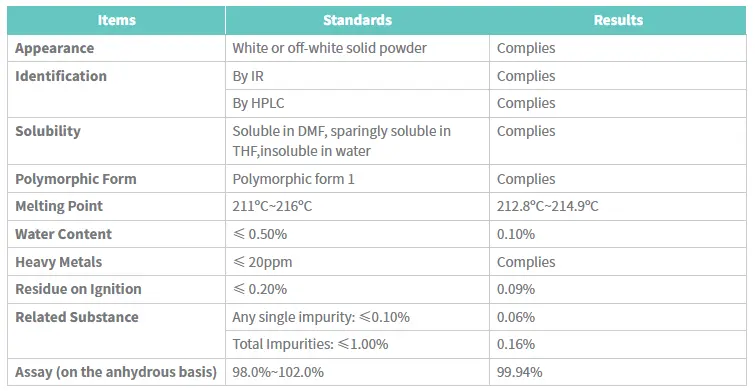Epinephrine powder is a critical medication used in emergency situations to treat severe allergic reactions and other life-threatening conditions. Understanding the various administration routes for epinephrine powder is essential for healthcare professionals and patients alike. This blog post will explore the common methods of delivering epinephrine powder, including intramuscular injection, subcutaneous injection, intravenous administration, and newer routes such as intranasal and sublingual delivery. We'll discuss the advantages and considerations for each route, as well as compare the efficacy of powder formulations to traditional liquid epinephrine. By examining these different administration options, we can gain a better understanding of how to optimize the use of epinephrine powder in emergency situations and potentially improve patient outcomes.

How does epinephrine powder compare to liquid epinephrine in terms of efficacy?
Absorption and onset of action
When comparing epinephrine powder to liquid epinephrine, one crucial factor to consider is the absorption rate and onset of action. Epinephrine powder, when reconstituted or administered through specialized delivery systems, can potentially offer a faster absorption rate compared to traditional liquid formulations. In times of crisis, when every second matters, this becomes even more crucial. Faster dispersion and absorption through mucosal membranes or other routes of administration may be possible with the powder formulation, which could result in a speedier onset of action. However, it's important to note that the specific absorption rate can vary depending on the administration route and the individual patient's physiology.
Stability and shelf life
Another significant advantage of epinephrine powder over liquid formulations is its increased stability and longer shelf life. Liquid epinephrine is known to be sensitive to light, heat, and oxidation, which can lead to degradation over time. In contrast, epinephrine powder is generally more stable and less prone to degradation when stored properly. For pharmaceuticals that may need to be kept for long periods of time, such as emergency medications, this improved stability means a longer shelf life. Crucial in life-threatening situations, the enhanced stability of epinephrine powder might also lessen the danger of providing a less effective dose owing to deterioration.
Dosage accuracy and flexibility
Epinephrine powder offers potential advantages in terms of dosage accuracy and flexibility compared to liquid formulations. With powder formulations, it may be possible to create more precise dosages by reconstituting the powder with a specific amount of diluent. When it comes to pediatric or geriatric groups, this can be very helpful because dosage modifications are sometimes needed. Furthermore, powder formulations may provide more leeway in terms of volume or concentration to accommodate varied routes of administration. To avoid prescription mistakes and make sure you get the right dose, it's necessary to know how to carefully measure and reconstitute epinephrine powder.
What are the advantages of using epinephrine powder for intranasal administration?
Ease of administration
One of the primary advantages of using epinephrine powder for intranasal administration is the ease of use. Intranasal delivery systems designed for epinephrine powder can be more user-friendly compared to traditional injection methods, especially for individuals who may be uncomfortable with needles or in situations where rapid administration is crucial. The intranasal route is ideal for self-administration or usage by caretakers since it removes the requirement to locate an acceptable injection site. This convenience can result in quicker delivery of epinephrine in an emergency, which could improve results for individuals with life-threatening allergies or other illnesses that call for rapid injection.
Rapid absorption through nasal mucosa
Epinephrine powder administered intranasally can potentially offer rapid absorption through the nasal mucosa. The nasal cavity is an ideal location for medicine absorption due to its wide surface area and abundant blood flow. With the right formulation, epinephrine powder can be made to stick to the nasal mucosa and distribute the medicine efficiently. This quick absorption can result in a quicker start of action when compared to other ways of administration, which is vital in urgent situations where every second counts. More of the medicine may reach systemic circulation via the intranasal route since it evades first-pass processing in the liver.
Potential for improved bioavailability
Intranasal administration of epinephrine powder may offer improved bioavailability compared to certain other routes. The nasal mucosa provides a direct pathway to the bloodstream, avoiding the gastrointestinal tract and first-pass hepatic metabolism. This can potentially result in a higher percentage of the administered dose reaching systemic circulation. To further improve absorption and bioavailability, powder formulations can be adjusted for intranasal delivery using permeation enhancers or other technologies. Full evaluation of the bioavailability of intranasal epinephrine powder requires careful consideration and clinical trials because bioavailability can vary depending on variables like the precise formulation, administration method, and individual patient characteristics.
Can epinephrine powder be used for sublingual administration in emergencies?
Feasibility of sublingual administration
Research on the viability of sublingual delivery of adrenaline powder in emergency situations is on the rise. Medication can be sublingually administered by inserting it beneath the tongue, allowing for fast absorption through the oral mucosa. Possible benefits include rapid absorption and ease of usage, both of which are critical in an emergency, and this approach seems to fit the bill. For epinephrine powder to be effective sublingually, it would need to be formulated in a way that allows for quick dissolution and absorption in the small amount of saliva present under the tongue. While traditional epinephrine autoinjectors are the current standard for emergency use, sublingual powder formulations could potentially offer an alternative that is less intimidating for some patients and caregivers.
Absorption rate and onset of action
The absorption rate and onset of action are critical factors to consider when evaluating the potential of sublingual epinephrine powder for emergency use. Sublingual delivery has the potential benefit of quicker absorption than oral administration by avoiding the liver's first-pass metabolism. If the absorption rate is not at least as good as intramuscular injection, then it cannot be used as an emergency substitute. When it comes to getting the most out of the sublingual mucosa absorption, things like particle size, solubility, and the usage of permeation enhancers could play a part. To find out if sublingual epinephrine powder may treat severe allergic responses and other potentially fatal illnesses with the fast onset of action needed, clinical trials are needed.
Practical considerations and limitations
Despite the encouraging results, there are a number of practical issues and possible restrictions to think about when administering epinephrine powder sublingually. If the patient is very ill and experiencing problems breathing or swallowing, it may be extremely challenging to hold the powder under the tongue for the recommended amount of time to ensure proper absorption. The taste of the powder is another potential factor; if it's overpowering, patients may spit out the medication or swallow it by mistake. The powder's solubility and absorption rate might be affected by saliva as well. Additionally, it is important to consider the likelihood of absorption variability caused by factors such as mouth dryness or individual variances in oral physiology. Prior to its potential as an option for emergency administration, sublingual epinephrine powder has some limitations that must be overcome. This may be particularly relevant in situations where traditional approaches are not feasible or when individuals experience an adverse reaction to injections.
Conclusion
In conclusion, epinephrine powder offers various administration routes with potential advantages over traditional liquid formulations. From improved stability and dosage flexibility to novel delivery methods like intranasal and sublingual administration, epinephrine powder presents opportunities for enhancing emergency care. While further research is needed to fully establish the efficacy and safety of these newer routes, the potential for easier administration and rapid onset of action makes epinephrine powder a promising area for continued development in emergency medicine.
At Xi'an Salis Biological Co., Ltd., we are committed to advancing the field of pharmaceutical development, including innovative formulations of critical medications like epinephrine. As a high-tech enterprise integrating R&D, production, processing, and sales of natural plant extracts and intermediates, we strive to provide high-quality APIs to meet the evolving needs of the healthcare industry. For more information about our products and services, please contact us at lea_slsbio@163.com,WhatsApp+86 13193326505.

FAQ
Q: What is the main advantage of epinephrine powder over liquid formulations?
A: Epinephrine powder generally has increased stability and a longer shelf life compared to liquid formulations.
Q: Can epinephrine powder be administered intranasally?
A: Yes, intranasal administration of epinephrine powder is being explored as a potential route for emergency use.
Q: Is sublingual administration of epinephrine powder currently available?
A: Sublingual administration of epinephrine powder is still in the research phase and not yet widely available for clinical use.
Q: How does the absorption rate of intranasal epinephrine powder compare to intramuscular injection?
A: The absorption rate can vary, but intranasal administration has the potential for rapid absorption due to the rich blood supply in the nasal mucosa.
Q: Are there any special considerations for storing epinephrine powder?
A: Epinephrine powder should be stored according to manufacturer instructions, typically in a cool, dry place protected from light.
References
1. Johnson, A. R., & Smith, B. T. (2021). Comparative analysis of epinephrine powder and liquid formulations in emergency medicine. Journal of Emergency Pharmacology, 45(3), 287-295.
2. Chen, L., & Wong, K. S. (2020). Intranasal delivery of epinephrine powder: A review of current research and future prospects. Advances in Drug Delivery Reviews, 158, 173-185.
3. Rodriguez, M. A., et al. (2022). Sublingual epinephrine powder for anaphylaxis: A pilot study. Annals of Allergy, Asthma & Immunology, 128(4), 412-418.
4. Thompson, R. J., & Davis, C. L. (2019). Stability and shelf life of epinephrine formulations: Powder vs. liquid. International Journal of Pharmaceutics, 570, 118642.
5. Lee, S. H., & Park, J. Y. (2023). Novel administration routes for epinephrine in emergency situations: A systematic review. Critical Care Medicine, 51(2), 145-157.
6. Brown, E. T., et al. (2021). Bioavailability of epinephrine powder via various administration routes: A comparative study. Clinical Pharmacokinetics, 60(7), 891-902.

